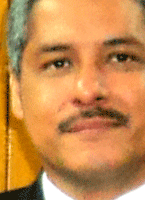|
 Get to know the struggle to firmly incorporate Panama into the scene of Advanced Internet and of the region’s scientific, technological and academic development. Get to know the struggle to firmly incorporate Panama into the scene of Advanced Internet and of the region’s scientific, technological and academic development.
In 2004 REDCYT was constituted by the University of Panama, the Santa María la Antigua University, the Latin American University for Science and Technology, the Inter-American University, the Ministry of Agricultural Development and SENACYT. Additionally, the expectations were to connect REDCYT’s member universities, Panama’s Tecnológica and the Ministry of Health. Six years later, how is the REDCYT membership constituted?
Currently, three of REDCYT’s founding institutions are still active in the Directing Board, and were joined by Panama’s Technological University in 2006. The healthcare sector is one of the most important for the national network; this is why we have developed a series of joint activities with the major health institutions, like the Social Security Fund and the Ministry of Health (Santo Tomás Hospital, Child’s Hospital and 24th of December Regional Teaching Hospital). One of the aims in the short term is to incorporate the 24th of December Regional Teaching Hospital into REDCYT.
One of REDCYT’s initial objectives was to increase Panama’s leadership in the field of research and higher education. How would you evaluate the work developed by REDCYT to accomplish this objective? Have you somehow got closer to its accomplishment?
REDCYT was created as an organisation in 2002, through an initiative by the National Secretariat for Science, Technology and Innovation (SENACYT), as part of the National Strategic Plan for Science and Technology, which regarded ICT development as fundamental. This initiative could not be materialised without the participation of the two major universities in the country: the University of Panama and Panama’s Technological University, which have the largest teaching and researchers’ staff.
Increasing Panama’s leadership in the field of research and higher education is a common objective of the State, of official universities and of REDCYT. This is why we have joined efforts, like the New Generation Internet calls promoted by SENACYT. There are calls launched annually in different areas for the development of research projects and to build research capacities.
We have moved forward towards the goal we set, there are more people doing research. However, we still have a lot of work to be done.
On the 9th of September 2005 Panama’s connection to RedCLARA was established; almost after exact six years of this landmark, what does REDCYT expect from RedCLARA?
REDCYT expects RedCLARA to continue providing a communication infrastructure which adapts itself to traffic demands. From the administrative point of view, we expect a greater assistance in the formulation and development of regional projects.
What are your future plans in terms of connection and membership?
In terms of connection, we expect to establish a topology which facilitates the incorporation of new members. As for membership, we are analysing proposals which establish models that allow the incorporation of new members, according to usage and economic possibilities.
What can REDCYT offer today to RedCLARA in terms of experience, relationship with research and technology communities?
REDCYT, through its member institutions has a pool of teachers and researchers who actively participate in national and international projects in topics as diverse as risk and disaster management in the Central American region, basin studies and early alert systems, among others.
At present, which research communities and projects are benefitting from their connection to REDCYT and from REDCYT’s connection to RedCLARA?
The most benefitted communities with the link to REDCYT-RedCLARA are ICT, Natural Sciences and Health.
From the point of view of REDCYT, how do you evaluate the fact that RedCLARA chose Panama to host of the first meeting of the TICAL Conference?
It was on March 22nd, 2011, at the meeting held at the rector’s office of the University of Panama, when Dr Gustavo García de Paredes, president of REDCYT, was officially notified about the intention of organising in Panama the First Conference of Information and Communication Technologies Directors from Latin American Higher Education Institutions. From that moment on, REDCYT’s presidency and later on its Board of Directors welcomed the proposal of having Panama as the host of first TICAL conference, which would be held in June. In short, we analysed RedCLARA’s choice of Panama for this important event as very positive and appropriate.
Do you think such choice of venue brought any benefits to REDCYT?
Panama’s designation as the host of the first TICAL conference brought benefits to REDCYT in many senses; on the one hand it allowed the institutions that are part of the national network to get incorporated into the programme of conferences through scholarships awarded by RedCLARA and, at the same time, get incorporated into the Network of Latin America’s ICT Directors, thus initiating an exchange of experiences both in academic and research terms. On the other hand, it enabled university authorities to resume their commitment to RedCLARA during the meeting held at the University of Panama’s rector’s office. Additionally, we took the opportunity to give a closer view of RedCLAR as an organisation to the representatives from Panama’s Network of Teaching Hospitals and other organisations which have shown continued interest in becoming part of REDCYT and join regional initiatives through RedCLARA. |
